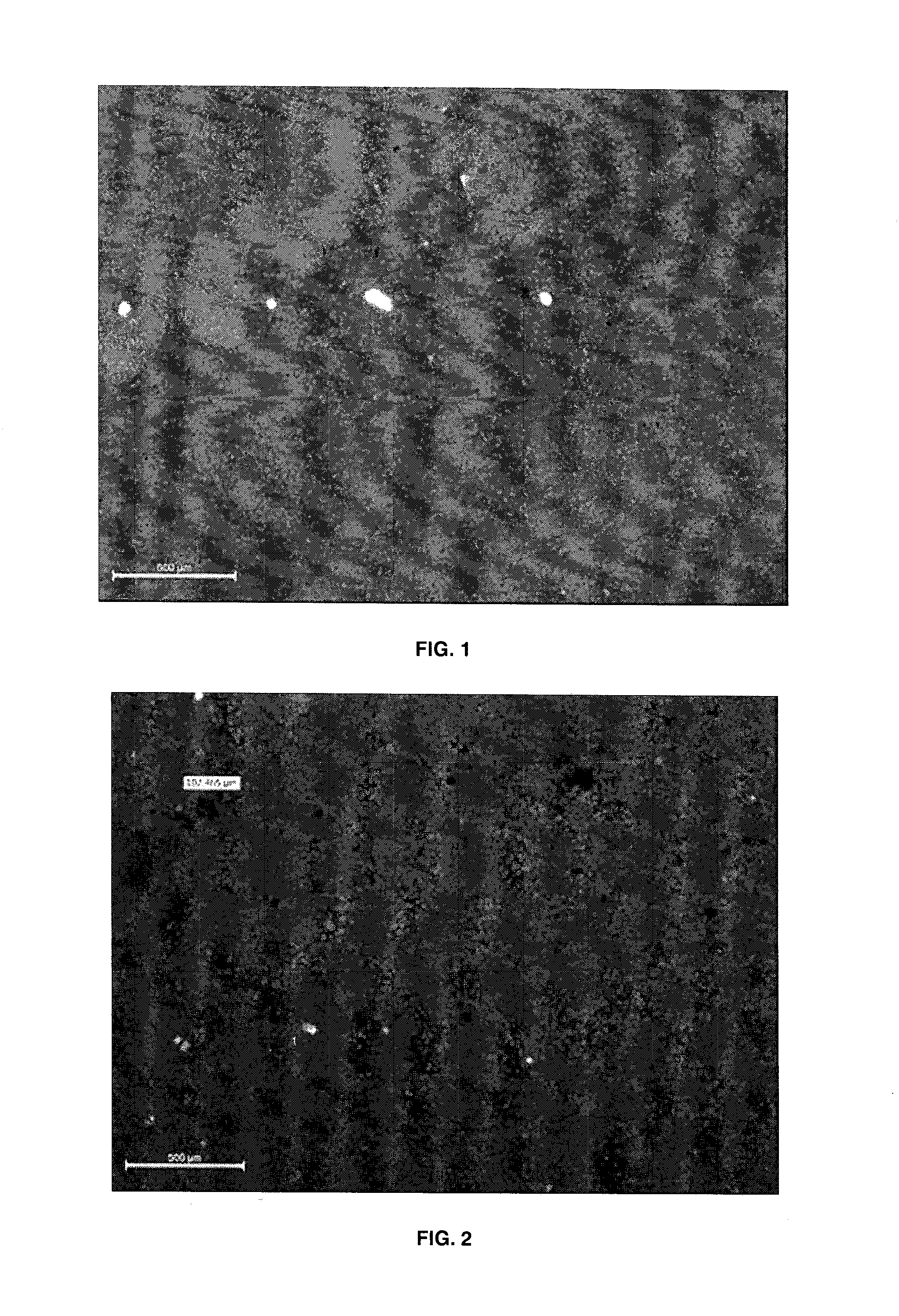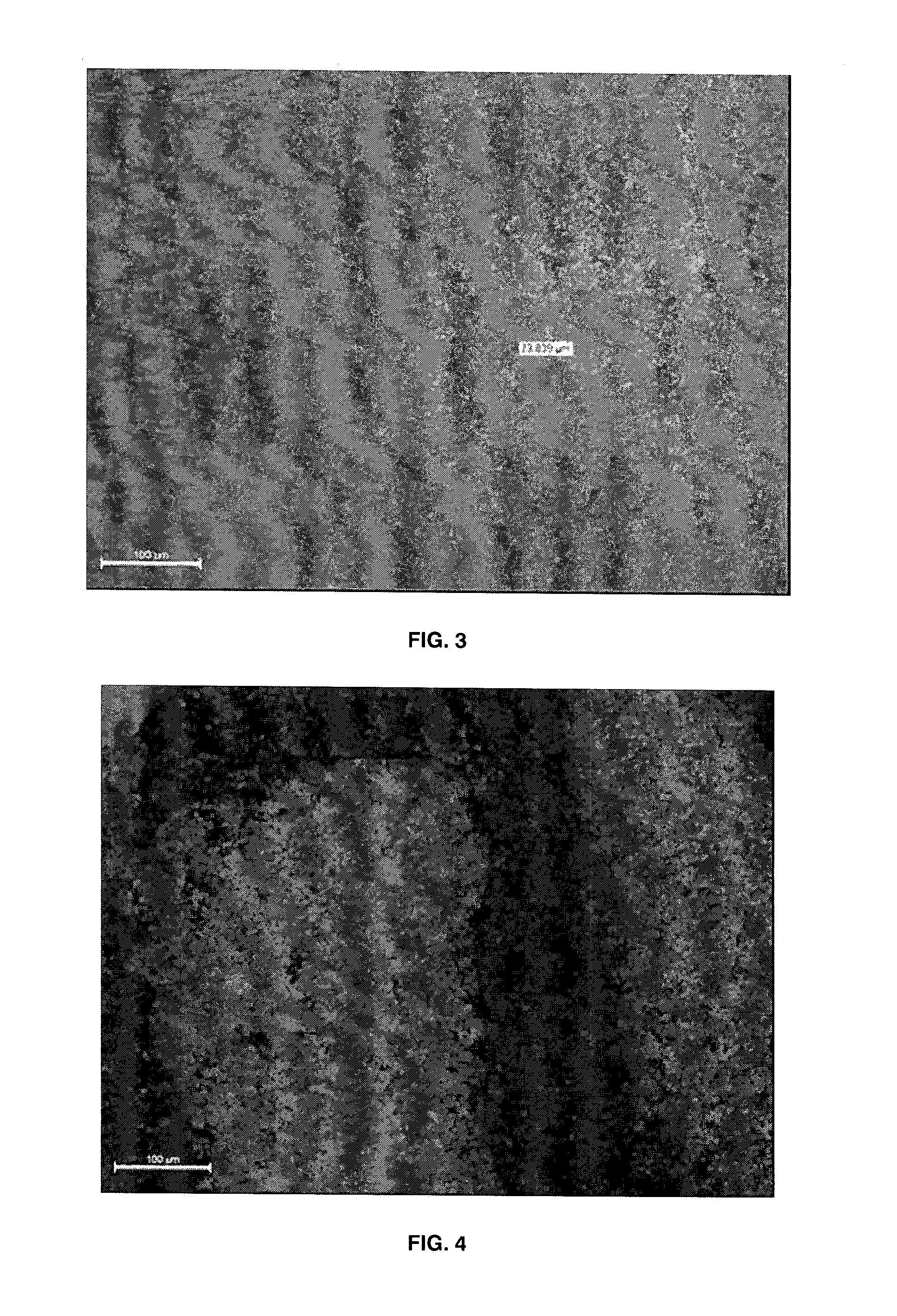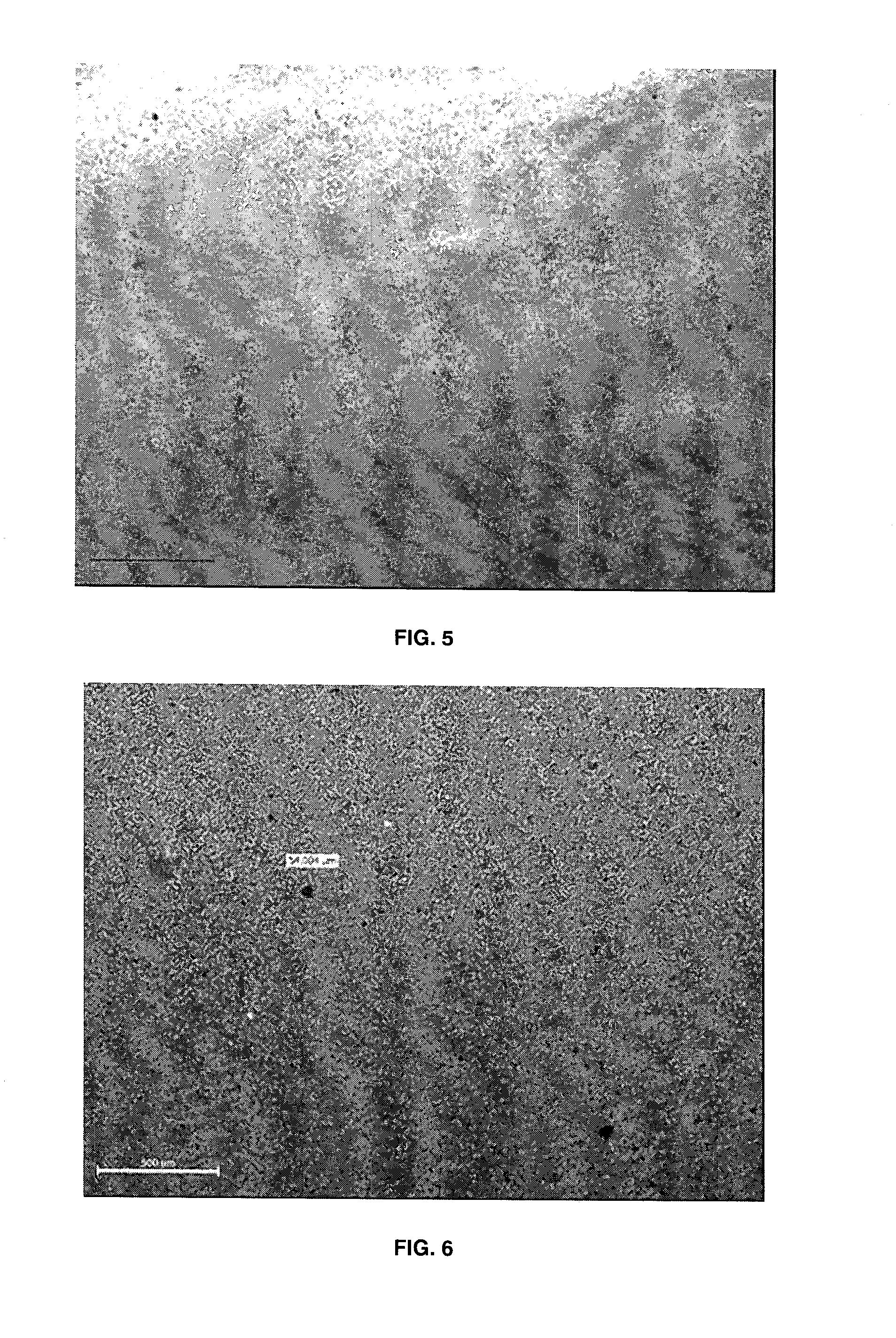Nanocomposite
a technology of nanoparticles and nanoparticles, applied in the field of nanoparticles, can solve the problems of unsatisfactory hopes of drastically improving the mechanical properties of polymers by incorporating nanoparticles, the need to introduce a cnt-supported catalyst in an industrial polymerization reactor, and the marginal increase in mechanical properties. , to achieve the effect of improving and/or more stable dispersion of nanoparticles, improving and/or more stable dispersion of nano
- Summary
- Abstract
- Description
- Claims
- Application Information
AI Technical Summary
Benefits of technology
Problems solved by technology
Method used
Image
Examples
example 1
[0161]Polyolefin composition 1 contains a fluff of a bimodal polyethylene homopolymer prepared in the presence of a metallocene catalyst having a high load melt flow index of 11 g / 10 min, measured according to ISO 1133 at 190° C. and 21.6 kg. Polyolefin composition 1 has a density of 0.949 g / cm3 measured according to ISO 1183, a viscosity η of 35000 Pa·s, a weight average molecular weight Kw of 160 kDa and a molecular weight distribution MWD of 10.
[0162]FIG. 1 shows an optical microscopy view of resin 1, obtained by blending and extruding polyolefin composition 1 with a nanocomposite masterbatch 0 as described above. The largest nanoparticle aggregate has a size of 20 μm.
example 2
[0163]Polyolefin composition 2 contains a fluff of a monomodal polyethylene homopolymer prepared in the presence of a Ziegler-Natta catalyst having a melt flow index of 19 g / 10 min, measured according to ISO 1133 at 190° C. and 2.16 kg. Polyolefin composition 2 has a density of 0.951 g / cm3 measured according to ISO 1183, a viscosity η of 500 Pa·s, a weight average molecular weight Mw of 50 kDa and a molecular weight distribution MWD of 4.
[0164]FIG. 2 shows an optical microscopy view of resin 2, obtained by blending and extruding polyolefin composition 2 with a nanocomposite masterbatch 0 as described above. The largest nanoparticle aggregate has a size of 102 μm.
example 3
[0165]Polyolefin composition 3 contains a commercially available (from TOTAL PETROCHEMICALS) fluff of a bimodal polyethylene homopolymer prepared in the presence of a Ziegler-Natta catalyst having a high load melt flow index of 8 g / 10 min, measured according to ISO 1133 at 190° C. and 21.6 kg. Polyolefin composition 3 has a density of 0.950 g / cm3 measured according to ISO 1183, a viscosity η of 42600 Pa·s, a weight average molecular weight Mw of 250 kDa and a molecular weight distribution MWD of 17.
[0166]FIG. 3 shows an optical microscopy view of resin 3, obtained by blending and extruding polyolefin composition 3 with a nanocomposite masterbatch 0 as described above. The largest nanoparticle aggregate has a size of 24 μm.
PUM
| Property | Measurement | Unit |
|---|---|---|
| thickness | aaaaa | aaaaa |
| temperature | aaaaa | aaaaa |
| Load Melt Index | aaaaa | aaaaa |
Abstract
Description
Claims
Application Information
 Login to View More
Login to View More - R&D
- Intellectual Property
- Life Sciences
- Materials
- Tech Scout
- Unparalleled Data Quality
- Higher Quality Content
- 60% Fewer Hallucinations
Browse by: Latest US Patents, China's latest patents, Technical Efficacy Thesaurus, Application Domain, Technology Topic, Popular Technical Reports.
© 2025 PatSnap. All rights reserved.Legal|Privacy policy|Modern Slavery Act Transparency Statement|Sitemap|About US| Contact US: help@patsnap.com



